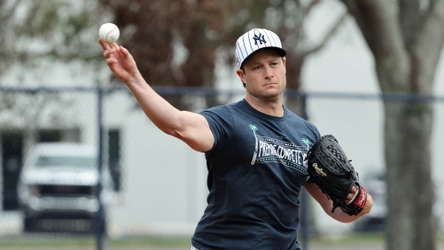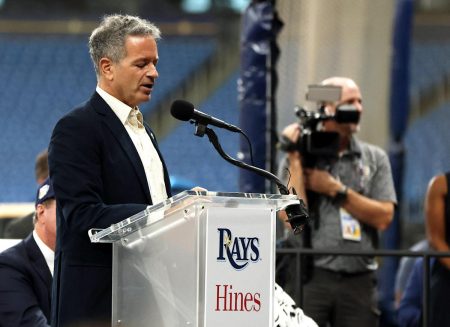Initial Reactions to the ABS Challenge System in Spring Training
One of the most intriguing storylines of Major League Baseball (MLB) spring training so far has been the introduction of the automated ball-strike (ABS) challenge system. Teams are getting a firsthand look at this new rule, which allows them to challenge ball or strike calls twice per game. However, only the batter, pitcher, and catcher can initiate these challenges, and they must do so immediately after the pitch. The system was first tested extensively in Triple-A last year, and now, as teams gear up for the 2025 season, it’s being implemented in spring training games. One of the earliest instances was during the Cubs’ first spring game against the Dodgers, where the Cubs used both of their challenges. The overall response from those present at the game was a mix of curiosity and enthusiasm. The speed at which the system operates, revealing the call on the scoreboard in under 20 seconds, was particularly notable. This rapid feedback is a refreshing contrast to the lengthy replay reviews that often disrupt the pace of the game.
Big Concerns About the ABS Challenge System
While the ABS challenge system has its merits, it also raises significant concerns. For one, the technology’s precision in identifying pitch locations could potentially expand the strike zone beyond its intended dimensions. Pitches where just a fraction of the ball touches the zone are being called strikes, which could give pitchers an unfair advantage at a time when baseball should be making it easier for hitters. This issue of the expanded strike zone is a critical one, as it could fundamentally alter the game’s balance. Another major concern is the potential for this system to be a stepping stone toward full robo-umps. Many in the baseball community fear that the introduction of ABS could pave the way for automation in other aspects of officiating, leading to a loss of the human element that makes baseball unique. Full robo umps have been tested in minor leagues and have generally received negative feedback, which makes the scenario less likely but no less worrisome. The emotional tension and human judgment in sports officiating are essential, and the idea of a playoff game being decided by an automated system doesn’t sit well with many fans and players alike.
Potential Benefits of the ABS Challenge System
Despite the concerns, the ABS challenge system offers several benefits. Primarily, it aims to provide a safety net for particularly poor ball and strike calls, ensuring a fairer zone for both hitters and pitchers. The entertainment value of this system is also noteworthy. Fans in Arizona, for instance, clearly enjoyed the instant feedback on the scoreboard. The dynamic of players initiating challenges, rather than managers or coaches, adds a unique and engaging element to the game. This not only enhances the viewing experience but also provides insights into which players have a keen sense of the strike zone. Baseball fans often speculate about players’ abilities to recognize pitches, and the ABS system will make this aspect of the game more transparent. Additionally, the system is both simple and efficient, which is a significant advantage. It doesn’t disrupt the flow of the game, making it a much more seamless addition compared to other sports’ challenge systems.
The Role of Players in the Challenge System
One of the most distinctive features of the ABS challenge system is that it puts the responsibility of initiating challenges on the players—specifically the batter, pitcher, and catcher. This is a rarity in major American sports, where coaches typically have the authority to challenge calls. Tennis and cricket are the only other major sports where players can make such challenges. The involvement of players adds a new layer of engagement and strategy to the game. For example, it will be fascinating to see which players are adept at recognizing borderline pitches and which ones tend to be overconfident. This will not only make games more exciting but also provide a deeper understanding of how players think and react on the field. The challenge system could become a valuable tool for player development, encouraging them to pay closer attention to the strike zone and improving their overall game awareness.
The Impact on Umpires and the Game
The ABS challenge system has the potential to significantly impact how umpires call balls and strikes. While it is designed to support umpires and reduce egregious calls, it also serves as a form of accountability. Umpires will be more inclined to call pitches accurately, knowing that their decisions can be reviewed and potentially overturned. This could lead to a more consistent strike zone, which is beneficial for both players and fans. However, there is a concern that the system could undermine the authority and respect for umpires. The human element of baseball, including the cat-and-mouse game between the umpire, pitcher, catcher, and batter, is a crucial part of the sport’s charm. If the challenge system is implemented thoughtfully, it could strike a balance between ensuring fairness and maintaining the traditional aspects of the game, such as the art of catcher framing.
Future Prospects of the ABS Challenge System
The future of the ABS challenge system in MLB is still uncertain, but it has the potential to be a positive addition to the game, provided it is used as a support system rather than a gateway to full automation. The feedback from big leaguers during spring training will be crucial in determining whether the system should be adopted for the regular season in 2026 or later. If the system helps reduce the number of egregious calls and enhances the viewing experience without disrupting the natural flow of the game, it could gain widespread support. However, the league must be cautious not to overcorrect and lose the human touch that makes baseball so special. The challenge system could be a valuable tool for improving umpiring and player development, but it should be implemented in a way that preserves the game’s integrity and the emotional connection between players and fans.










